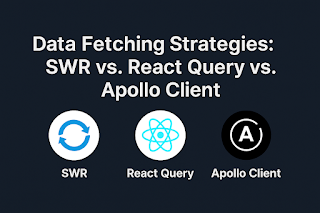Serverless Front-End & Back-End: Benefits and Use Cases
The serverless paradigm is transforming how developers build and deploy modern applications. Traditionally, managing back-end infrastructure meant provisioning servers, scaling systems, and maintaining uptime. But with serverless architecture, much of that burden is lifted—allowing developers to focus solely on building features.
Let’s explore how serverless works for both the front-end and back-end, its benefits, and where it shines the most.
What is Serverless?
Despite its name, serverless doesn’t mean there are no servers. It means you don’t manage them. Cloud providers handle provisioning, scaling, and infrastructure management. You deploy your code, and it runs when triggered—often priced by usage.
Popular serverless platforms include:
AWS Lambda
Azure Functions
Google Cloud Functions
Vercel / Netlify (for front-end)
Serverless for the Front-End
Serverless on the front-end often refers to deploying web apps on platforms like:
Vercel
Netlify
Cloudflare Pages
These platforms support frameworks like Next.js, Nuxt.js, React, and SvelteKit. They:
Handle CI/CD pipelines
Serve static or SSR/ISR content
Offer edge functions and APIs
Integrate easily with CMS and authentication
Serverless for the Back-End
Back-end logic—like handling payments, user auth, or database operations—can be offloaded to:
AWS Lambda + API Gateway
Firebase Functions
Supabase Edge Functions
Instead of running full-time servers, you write isolated functions that execute in response to events like HTTP requests or database triggers.
✅ Key Benefits of Going Serverless
Use Cases
Jamstack Websites Static front-ends with APIs and CMS like Sanity, Contentful, or Strapi.
Real-Time Apps Chat apps or dashboards using Firebase or Supabase with SSR front-ends.
eCommerce Platforms Next.js (front-end) + Stripe (payments) + serverless back-end for inventory.
Authentication Workflows Use Auth0 or Firebase Auth with serverless callbacks and webhooks.
Event-Driven Automation Backend logic triggered by file uploads, email events, or form submissions.
Example Architecture
User → Front-end (Next.js on Vercel) → API Route (Serverless Function) → DB/API
↓
Edge Functions / AuthCode your app → Push to GitHub → Auto-deployed to CDN.
Use API routes or functions for dynamic content and logic.
Things to Watch Out For
Cold starts: Functions may take time to boot after inactivity (mostly resolved with modern platforms).
Complex workflows: Long-running or stateful processes might be harder to model.
Monitoring: Traditional logging/debugging approaches may need adaptation.
The Future is Serverless
With tooling like Vercel, Netlify, Supabase, and Firebase continuing to mature, full-stack serverless is not just viable—it’s powerful. For startups and developers focused on speed, scale, and simplicity, this architecture offers an unbeatable balance.
Are you building serverless apps already? Curious about going serverless end-to-end? Share your thoughts or questions!
#Serverless #FrontendDevelopment #BackendDevelopment #WebDevelopment #Jamstack #CloudFunctions #Nextjs #Vercel #Netlify #Firebase #AWSLambda #FullStack #EdgeComputing #ModernWeb #DevOps




Comments
Post a Comment